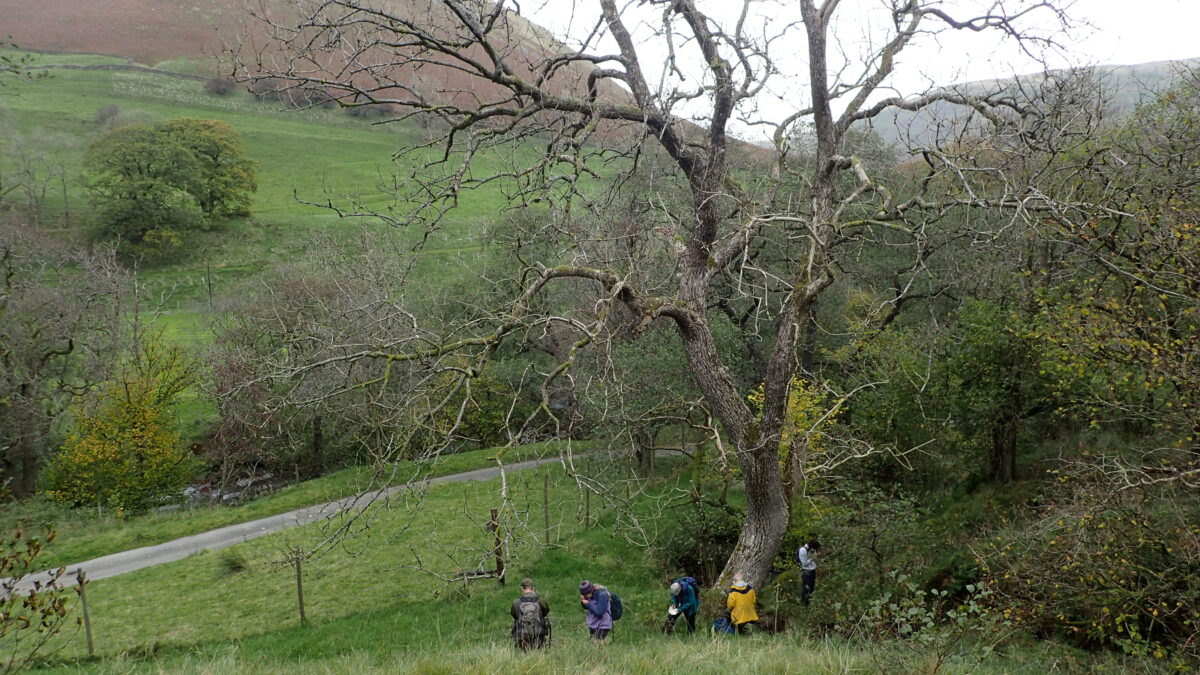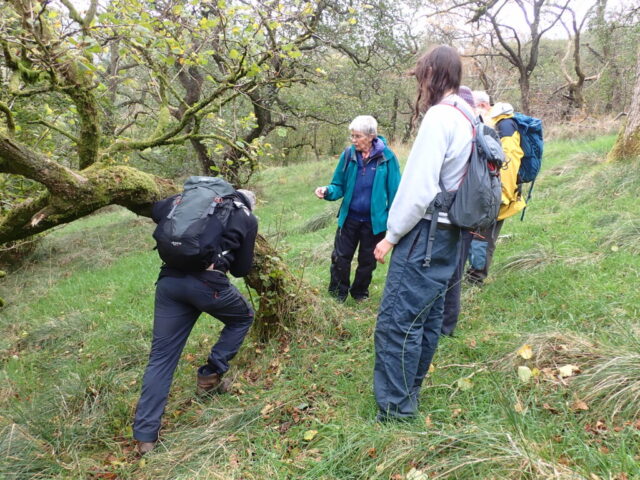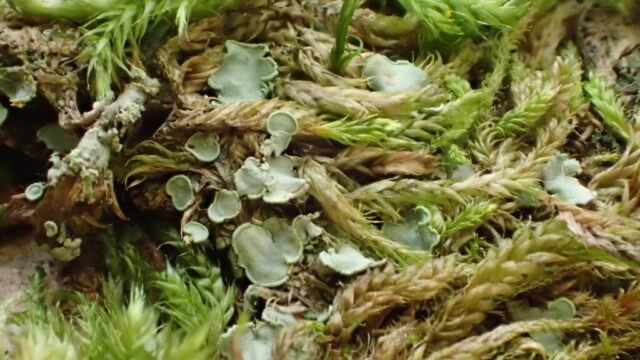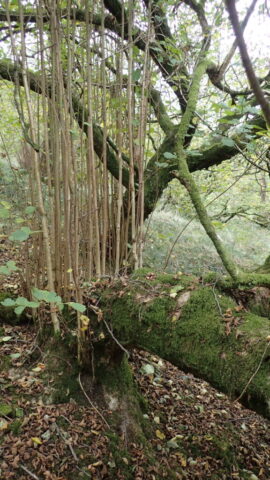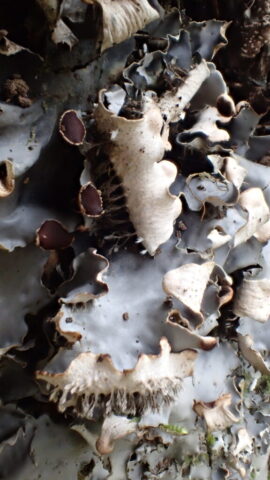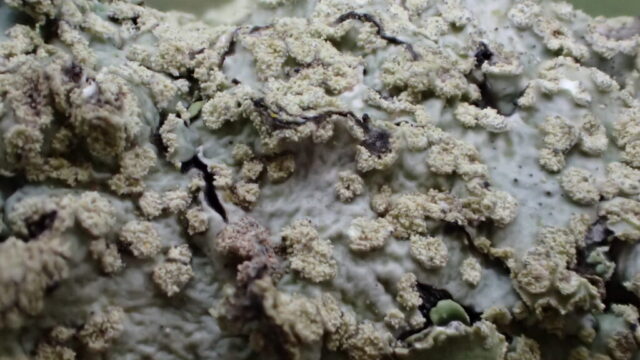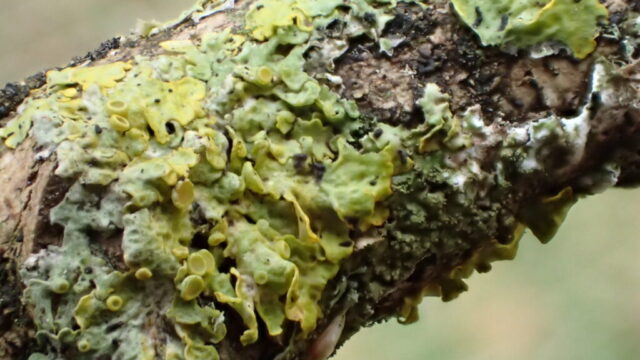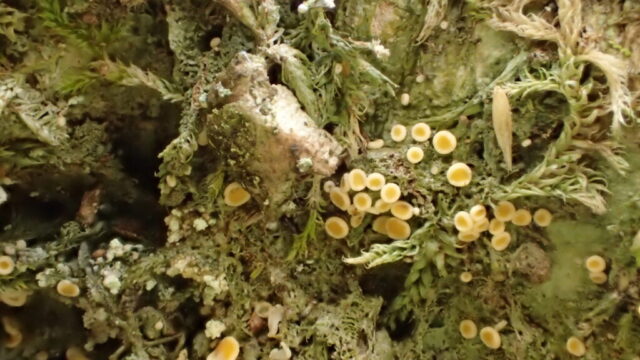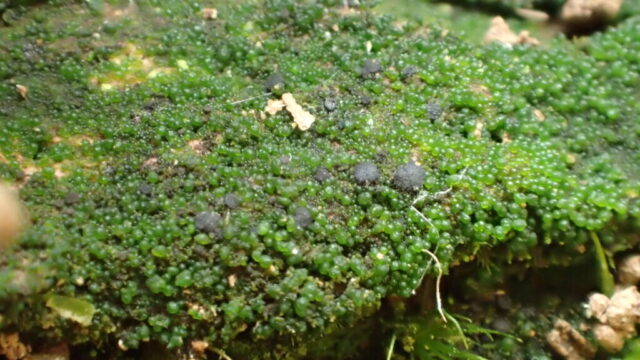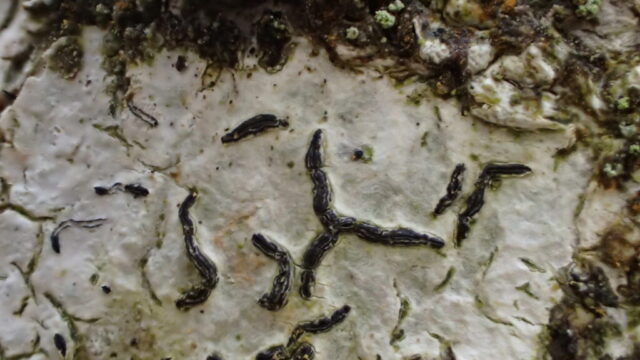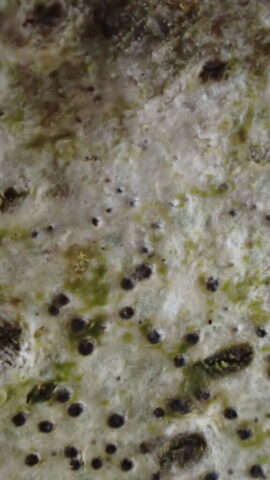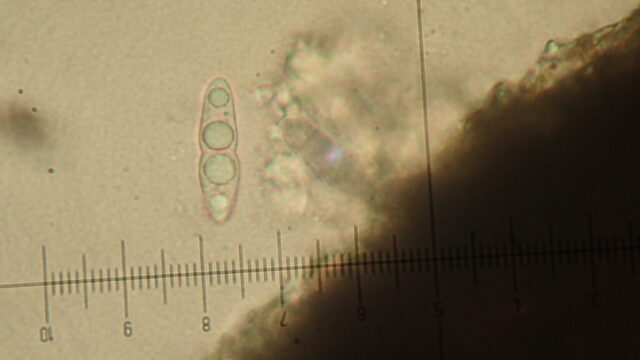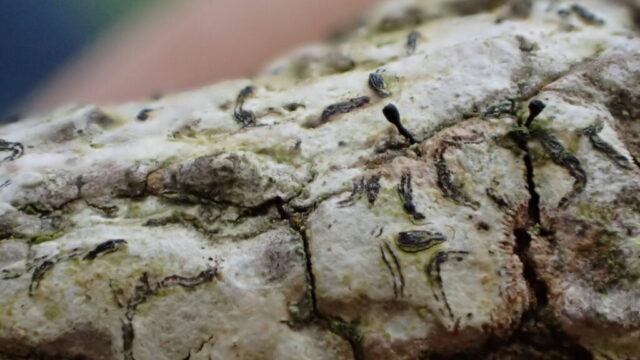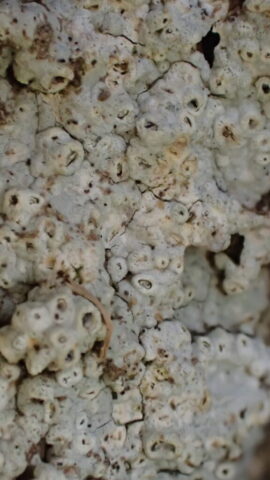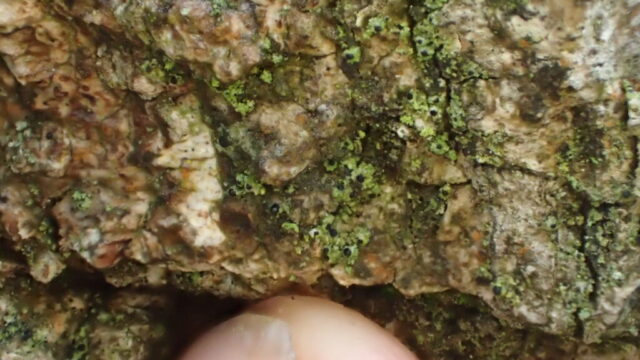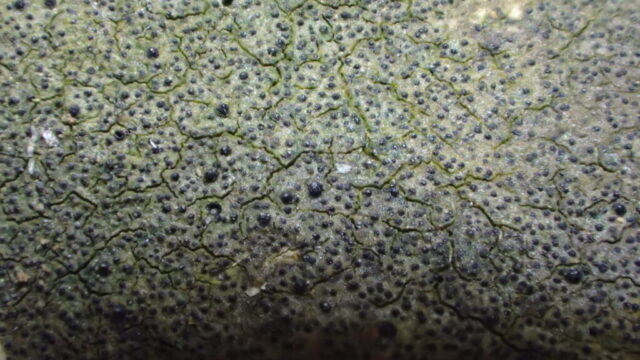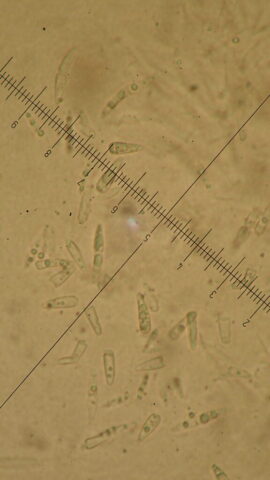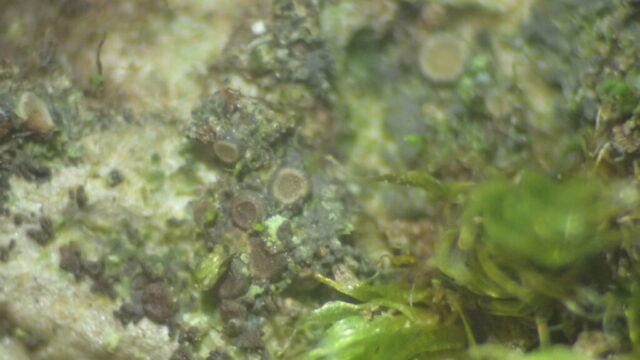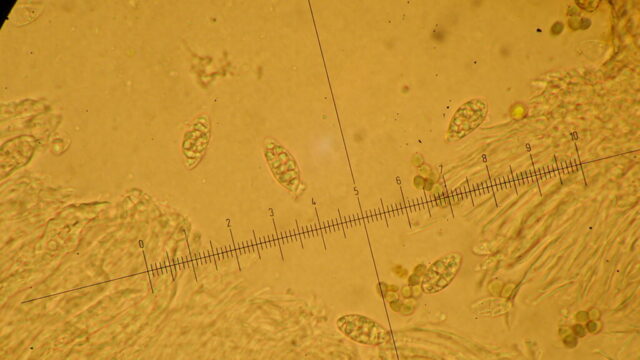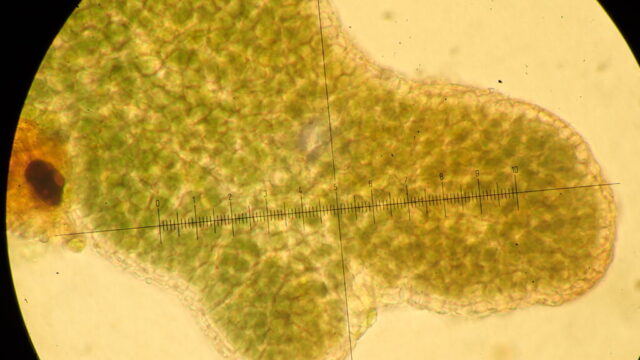I know of three Cumbrian Borrowdales. The first, that we have visited repeatedly over the years, is justifiably famous for its lichens (as well as things like rain, tea bread, Yews and Gates). As for the second… well I’d never spent much time looking at its lichens, and neither had anyone else. So, on a day when rain was forecast to sweep in, six of us gathered at its Lune Gorge end to make a start on exploring them. The M6, just yards away, roared continually in the background.
It was a bit of a race against the rain. The eponymous Borrowdale Wood was dry underfoot, which it probably isn’t very often given the predominance of old Alder, with some Ash and Hazel. There was the occasional Holly higher up and the odd Birch, Rowan and Hawthorn. There’s some regeneration which was nice to see, though much of that was epicormic growth at the base.
We quickly got to grips with the common macrolichens for the day: Hypotrachyna revoluta and afrorevoluta, Parmelia sulcata, Ramalina farinacea, Punctelia subrudecta. There was Normandina pulchella aplenty and several of the lirellate species that used to all be lumped together as Graphis scripta. A number of the often-poorly-from-dieback Ashes had Peltigera horizontalis, which was nice to see, though there was more P. praetextata and membranacea as one might expect. There was Stenocybe pullatula on the Alders; the tiny little pin-like fruiting bodies of one of the non-lichenised fungi that are recorded traditionally by lichenologists. Its cousin, S. septata was on at least one of the older Hollies. There didn’t seem to be that much of interest on the Hazels, as they appeared very mossy, even though they are pretty old. We did find Thelotrema lepadinum on one though. And there was a nice example of Coenogonium luteum’s apricot apothecia on another.
There were things missing though. As in many Cumbrian woodlands, we only found the four commonest Southern Oceanic Woodland Index lichens (Thelotrema, P. horzontalis, S. septata and Anisomeridium ranunculosporum). There was nothing that appears on the Upland Rainforest Index, even though it’s a damp, mostly acid-barked ancient woodland. And there was no Usnea. There was some Xanthoria parietina, though less than we might have feared.
As we moved higher up through the wood we found more white splats of Pertusaria and Ochrolechia species. There were the multi-furrowed lirellae of Graphis elegans; the tiny conical and pointed pycnidia of Anisomeridium polypori. We stopped for lunch just below a low fence. The rain started.
We moved reasonably quickly (for us) downhill and over to the other side of the valley (but stayed in the same grid square). More widely spaced Oaks and Ashes provided the first Hypogymnia of the day, and a few more fairly common species. Less common were Normandina chlorococca (tiny black eyeball-like perithecia protruding from green squamules) on one of the Ashes and the tiny jelly lichen Scytinium subtile that eagle-eyed Caz found on another. Chris found a mouse in a tree.
We could see how little of the first woodland we had explored. Let alone further up the valley. And the wood on this north side looked tangled and steep. It was getting wetter… so we decided to call it a day early in the afternoon, but with the knowledge that there’s interesting stuff here, even if there are still strange absences. Is that to do with pollution from the traffic heading up and down the Lune Gorge? The steam trains of yesteryear? Will there be Usnea higher up? We’ll have to come back for another look. And maybe I’ll go and have a look at the third Cumbrian Borrowdale sometime soon too…
Text: Pete Martin
Photos: Chris Cant and Pete Martin
